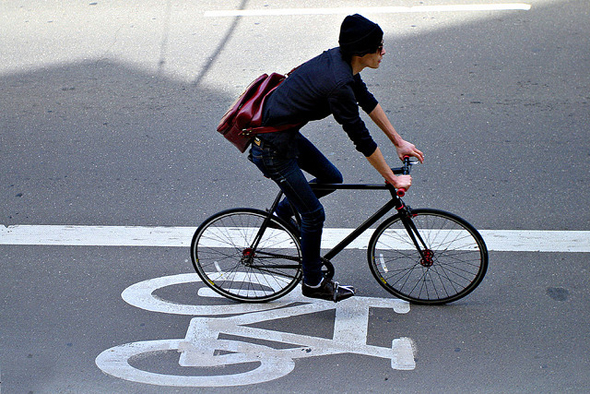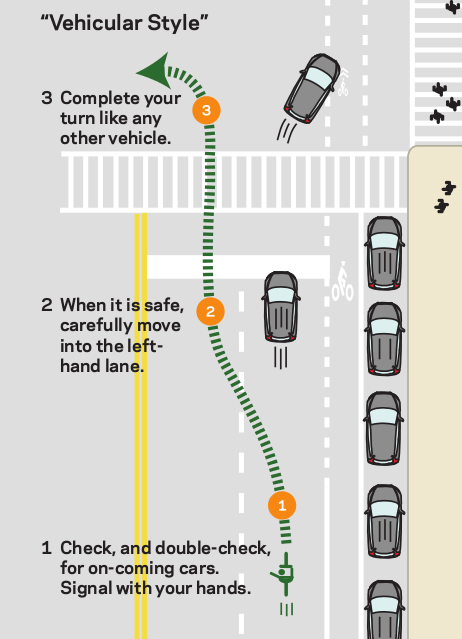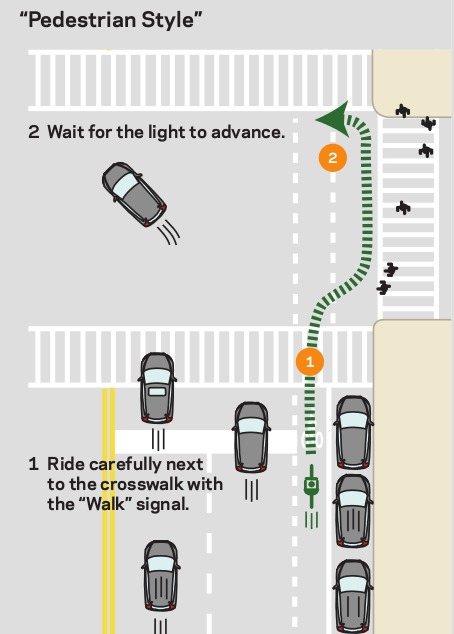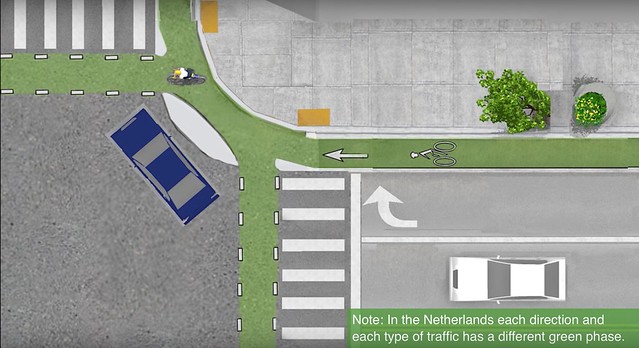City
What exactly are the rules of the bike lane in Toronto?
Posted by
Chris Bateman / June 10, 2014
122 Comments
The rules of the Toronto bike lane are, let's face it, unclear.
Judging from a recent helmet cam video circulated on YouTube, most cyclists don't know which vehicles are legally allowed to be stopped or parked in the bike lane. Contrary to popular belief, even dedicated bike lanes aren't off-limits to all motorized vehicles.
The lack of clearly posted rules is coupled with a dearth of visible enforcement--fines range from $60 to $150 for most bike lane infractions, but the biggest scofflaws--delivery van drivers and moving companies, judging from angry tweets--seem able to dodge enforcement officers with relative ease, increasing the sense of frustration from cyclists.
Coming straight from
the City of Toronto bylaw, here are the rules of the Toronto bike lane. Note that the rules differ slightly for painted and separated bike lanes, like on Sherbourne and Wellesley.
WHO CAN BLOCK PAINTED BIKE LANES?
Only bicycles
and e-bikes are permitted to use on-street, painted cycle lanes in Toronto, except for in a few unusual circumstances. Ambulances, police or fire service vehicles, or any other vehicles actively engaged in responding to an emergency, are exempt from parking, driving, and operating rules, so are active city, TTC, and public utility -- water, hydro, sewer maintenance -- vehicles. Everyone else has to stay out.
At the approach to intersections, turning vehicles are permitted to move over and occupy the bike lane.
WHO CAN STOP IN PAINTED BIKE LANES?
Vehicles loading or unloading a person with a disability, school buses picking up or dropping off kids, and, yes, taxis collecting or depositing passengers are all allowed to stop in the bike lane. No vehicles are permitted to drive for more than 45 metres in a bicycle-only part of the street marked with paint, however.
WHO CAN BLOCK SEPARATED BIKE TRACKS?
Only pedal-powered bicycles are permitted to use separated bike lanes. Wheel-Trans vehicles operated or licensed by the TTC are allowed to use the track area for loading and unloading passengers. Emergency response vehicles, City of Toronto vehicles, or vehicles parked as part of public utility work are similarly exempt from the rules.
WHO CAN STOP IN SEPARATED BIKE TRACKS?
No vehicle (except the ones listed above) is allowed to stop in a separated bike lane. Not taxis, not delivery vehicles, not moving vans. In fact, the only time a vehicle is allowed to pass through a separated lane is when the driver is accessing a driveway, parking lot, laneway, or side street.
TRANSIT STOPS
On Sherbourne and Roncesvalles, the bike lane cuts directly in front of several TTC stops. When a bus or streetcar is waiting with its doors open, cyclists must wait at least two metres back from the rear doors and allow passengers to enter or exit.
FINES
Any person operating an unauthorized vehicle in the bike lane, contrary to the rules set out in the city bylaw, is subject to a fine of $150.00. Illegally parking or stopping in a bike lane or separated lane also attracts a fine of $150.00.
Chris Bateman is a staff writer at blogTO. Follow him on Twitter at @chrisbateman.
Photo by Xander Labayen in the blogTO Flickr pool
Discussion
122 Comments
[...]





















